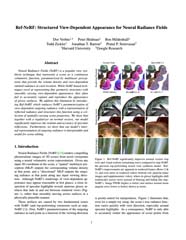
Abstract
As information exists in various modalities in real world, effective interaction and fusion among multimodal information plays a key role for the creation and perception of multimodal data in computer vision and deep learning research. With superb power in modeling the interaction among multimodal information, multimodal image synthesis and editing has become a hot research topic in recent years. Instead of providing explicit guidance for network training, multimodal guidance offers intuitive and flexible means for image synthesis and editing. On the other hand, this field is also facing several challenges in alignment of multimodal features, synthesis of high-resolution images, faithful evaluation metrics, etc. In this survey, we comprehensively contextualize the advance of the recent multimodal image synthesis and editing and formulate taxonomies according to data modalities and model types. We start with an introduction to different guidance modalities in image synthesis and editing, and then describe multimodal image synthesis and editing approaches extensively according to their model types. After that, we describe benchmark datasets and evaluation metrics as well as corresponding experimental results. Finally, we provide insights about the current research challenges and possible directions for future research.
Gauge Transformations
The gauge transformation could be a pre-defined function. Intuitively, compared with a pre-defined function, a learnable gauge transformation is more favorable as it can be optimized towards the final use case of the neural field and possibly yields better performance. For learning neural gauge fields, we disambiguate between two cases: continuous (e.g., 2D plane and sphere surface) and discrete (e.g., hash table space) mappings.
Continuous Gauge Transformations
Discrete Gauge Transformations
Regularization for Gauge Transformation
Results of Gauge Transformation
Application in Texture Editing
Citation
@inproceedings{zhan2023general,title = {General Neural Gauge Fields},
author = {Zhan, Fangneng and Liu, Lingjie and Kortylewski, Adam and Theobalt, Christian},
booktitle = {International Conference on Learning Representations},
year = {2023}
}
